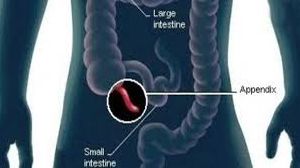TLH by Ligasure
Add to
Share
228 views
Report
1 month ago
Description
Total Laparoscopic Hysterectomy (TLH) is a minimally invasive surgical procedure performed to remove the uterus entirely, including the cervix, using laparoscopic techniques. Among the advanced tools available for TLH, the Ligasure vessel-sealing system has emerged as a preferred choice due to its precision, safety, and efficiency. What is Ligasure? Ligasure is an advanced bipolar vessel-sealing technology that allows surgeons to seal blood vessels and tissue bundles with minimal thermal spread. It ensures effective hemostasis, reduces blood loss, and shortens operative time compared to conventional methods. The device is particularly useful in gynecologic surgeries like TLH, where multiple vascular structures need secure and rapid sealing. Advantages of TLH by Ligasure Minimal Blood Loss: Ligasure seals vessels up to 7 mm in diameter, providing excellent hemostasis during uterine dissection. Reduced Operative Time: The device allows for rapid coagulation and cutting of tissues, making the procedure faster. Lower Risk of Thermal Injury: Ligasure’s controlled energy delivery minimizes collateral tissue damage, which is critical near delicate structures like the ureters and bladder. Shorter Hospital Stay: As a minimally invasive approach, patients experience less postoperative pain and faster recovery compared to open hysterectomy. Improved Surgical Precision: Ligasure provides consistent sealing, allowing precise dissection around the uterine arteries, cardinal ligaments, and adnexa. Procedure Overview Anesthesia and Positioning: The patient is placed under general anesthesia in a lithotomy position. Port Placement: Small incisions (5–12 mm) are made for laparoscopic ports. A camera port and working ports are established. Dissection: The uterine arteries, ligaments, and adnexal attachments are carefully dissected. Ligasure is used to seal and divide these structures efficiently. Uterus Removal: The uterus is detached from the vaginal vault and removed through the vagina or morcellation if required. Closure: The vaginal cuff is sutured laparoscopically, and ports are closed. Indications TLH by Ligasure is indicated for various gynecological conditions, including: Fibroids (leiomyomas) Adenomyosis Abnormal uterine bleeding resistant to medical therapy Endometrial hyperplasia or precancerous lesions Chronic pelvic pain related to uterine pathology Recovery and Outcomes Patients undergoing TLH with Ligasure usually experience: Minimal postoperative pain Rapid mobilization within 6–12 hours post-surgery Shorter hospital stay (usually 24–48 hours) Quick return to normal activities (within 1–2 weeks) Conclusion TLH by Ligasure represents a significant advancement in minimally invasive gynecologic surgery. Its ability to provide secure vessel sealing, reduce operative time, and promote faster recovery makes it a preferred choice for surgeons worldwide. With experienced laparoscopic teams, TLH with Ligasure offers patients a safe, efficient, and patient-friendly approach to uterine removal.
Similar Videos






